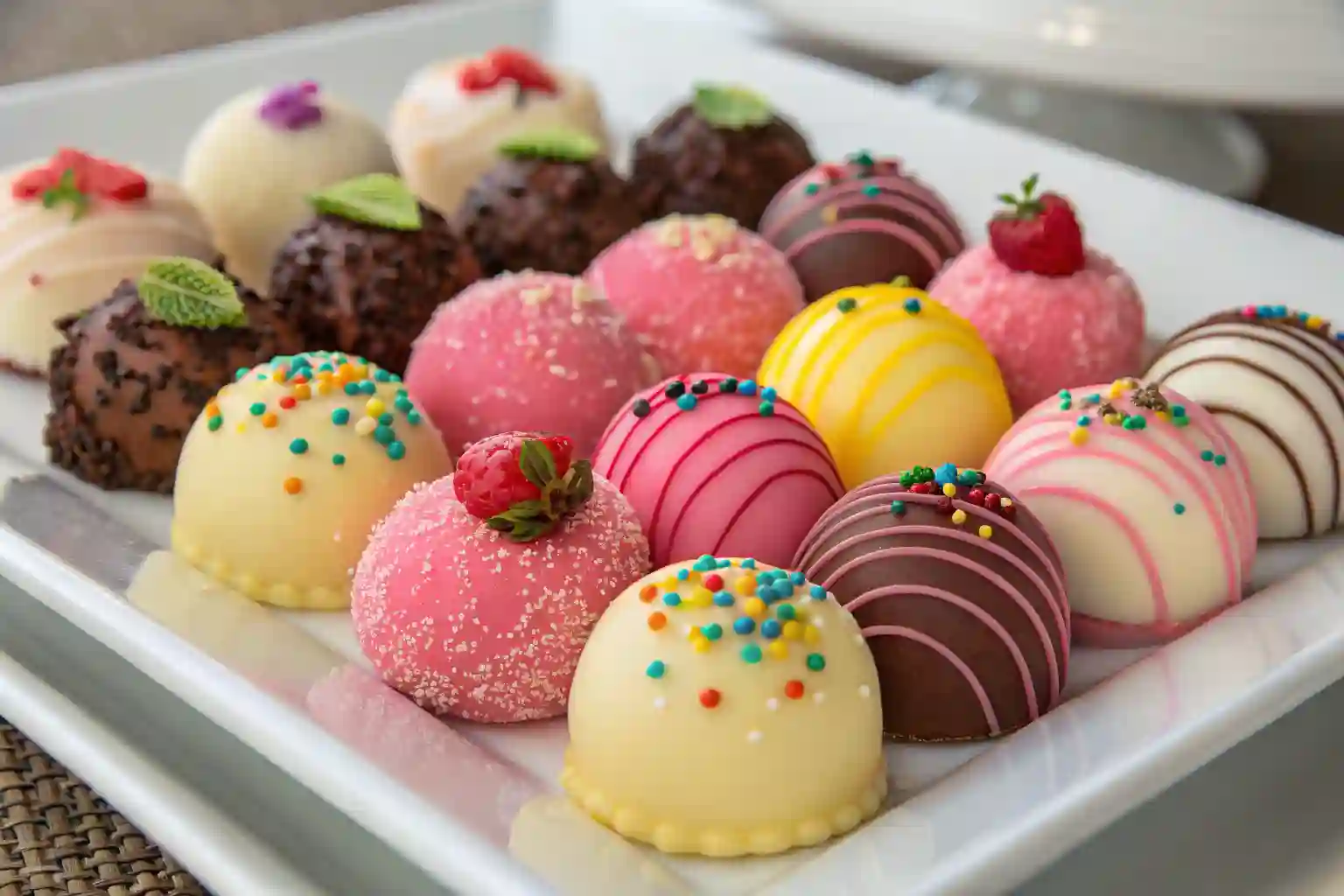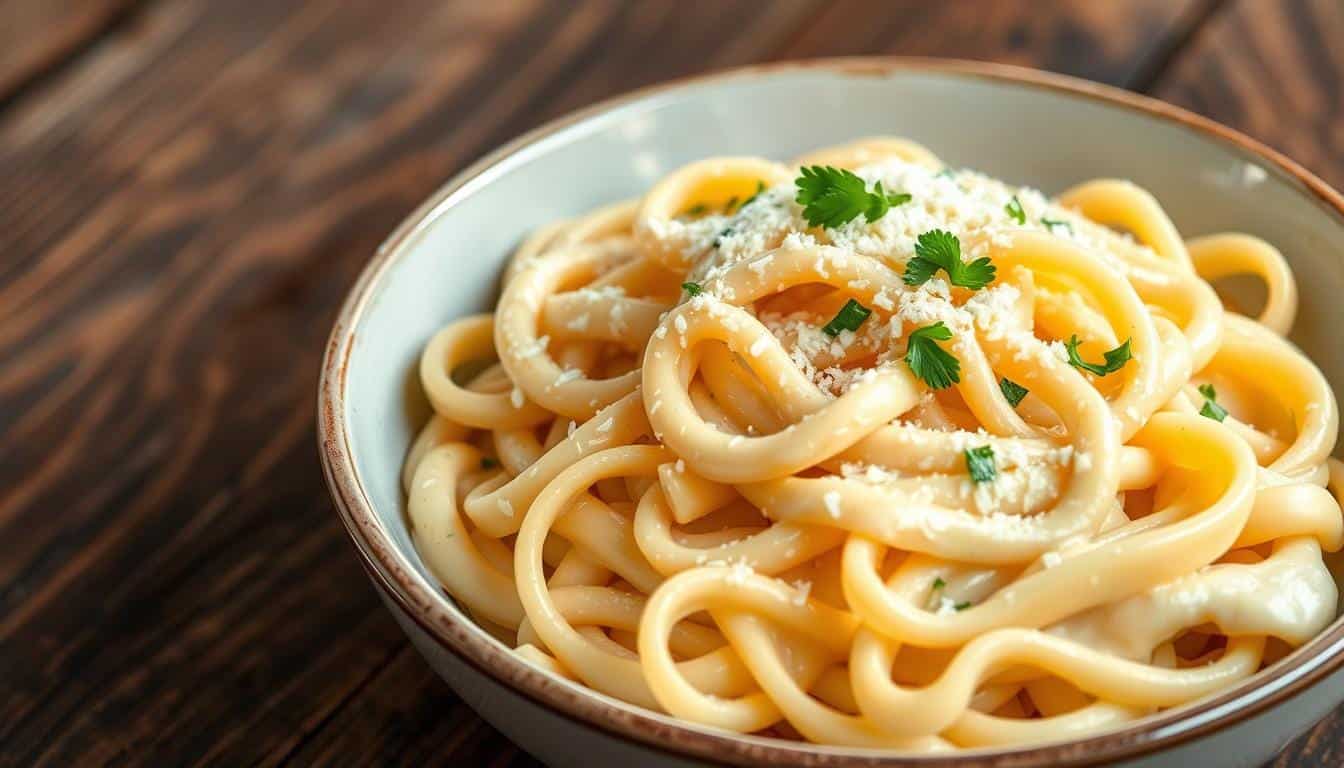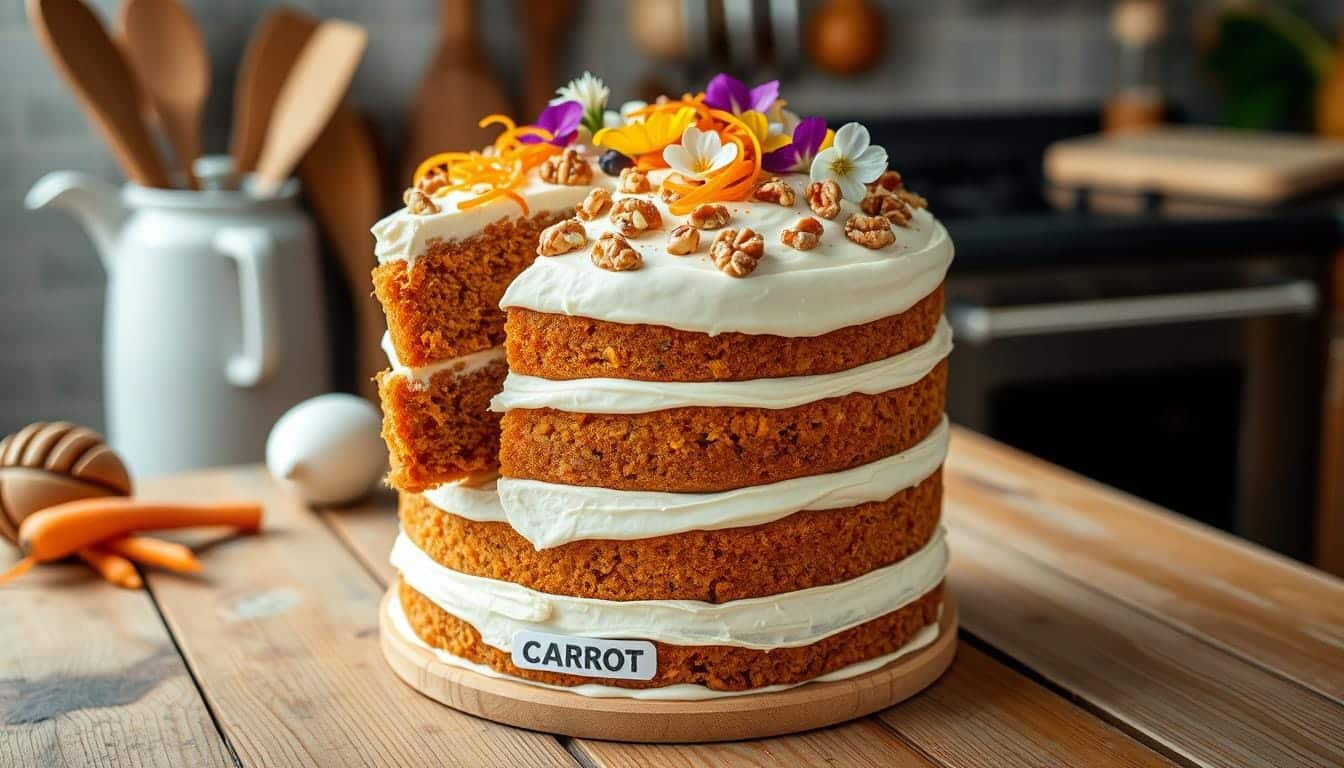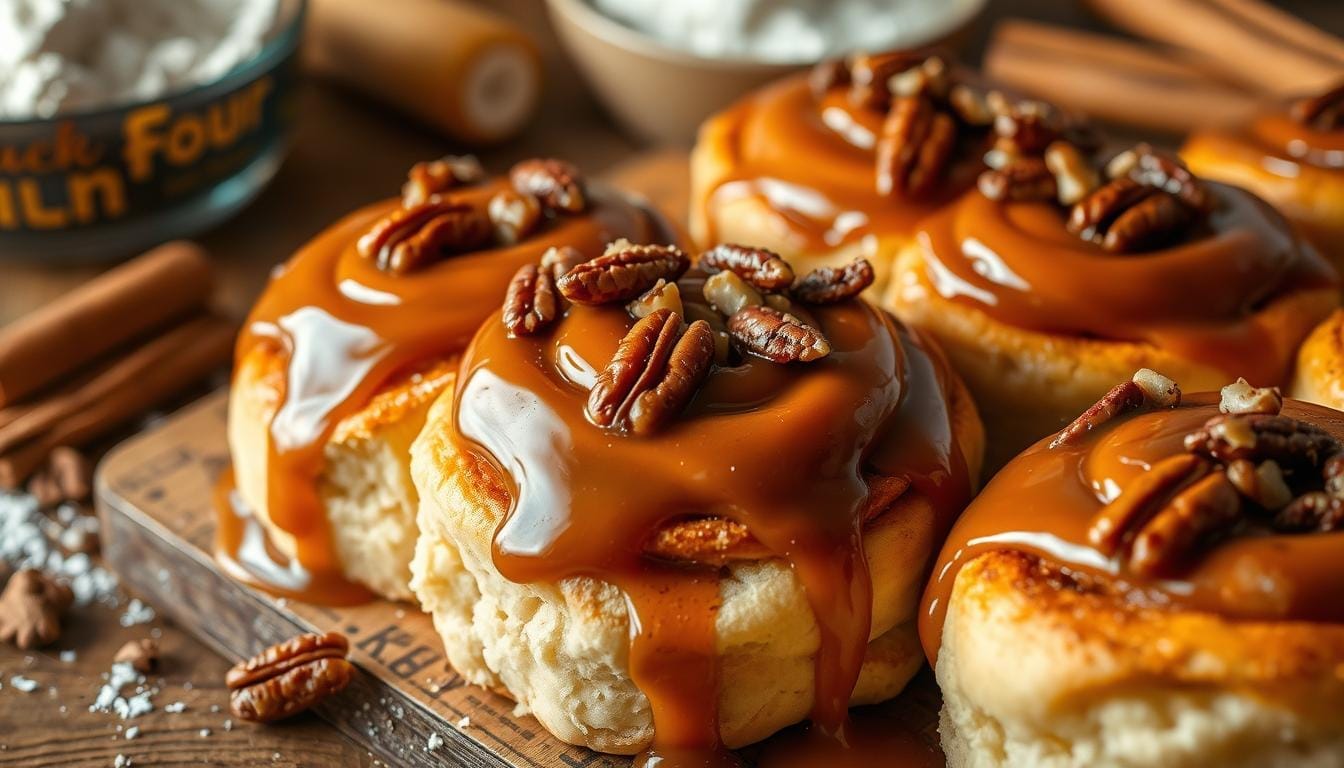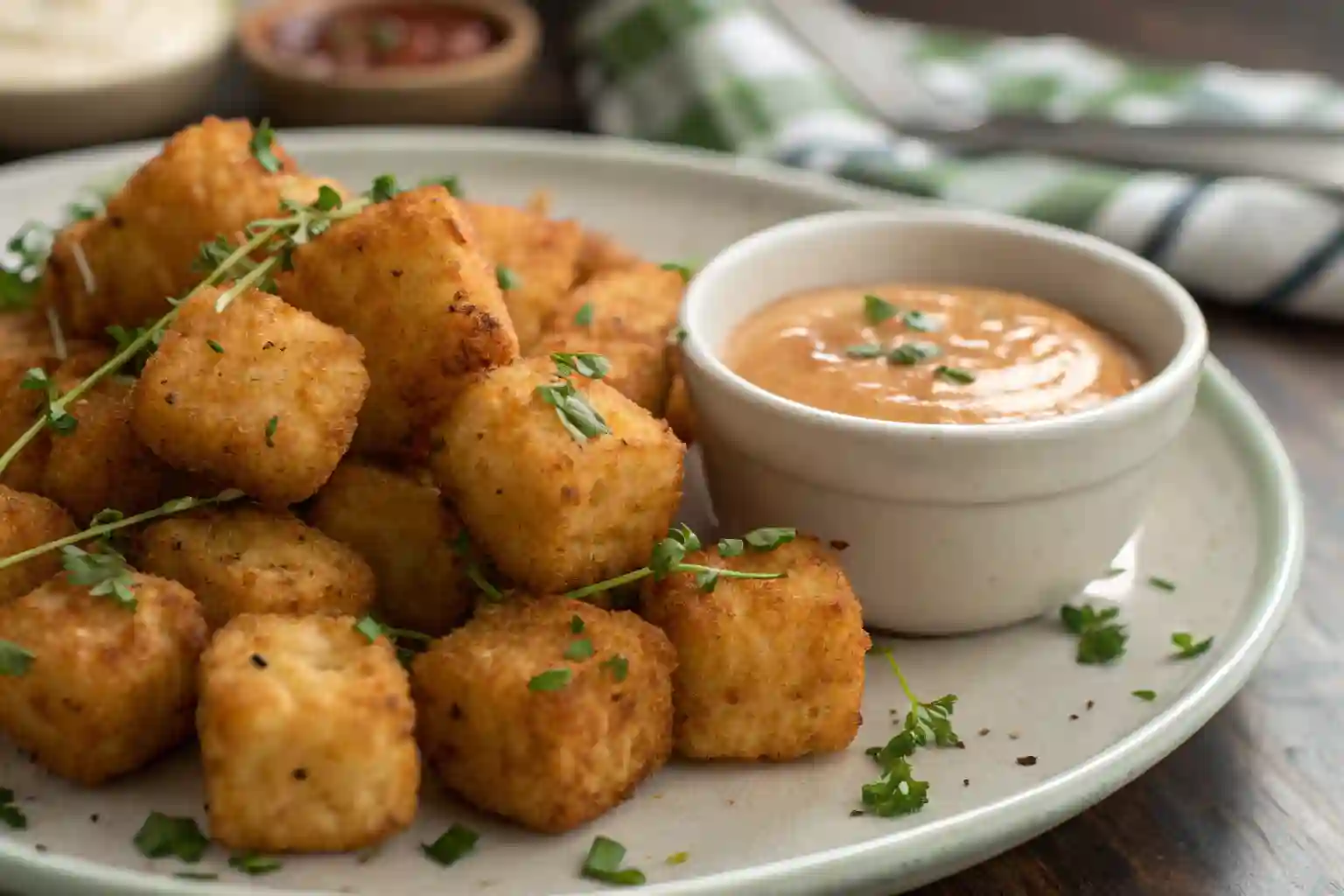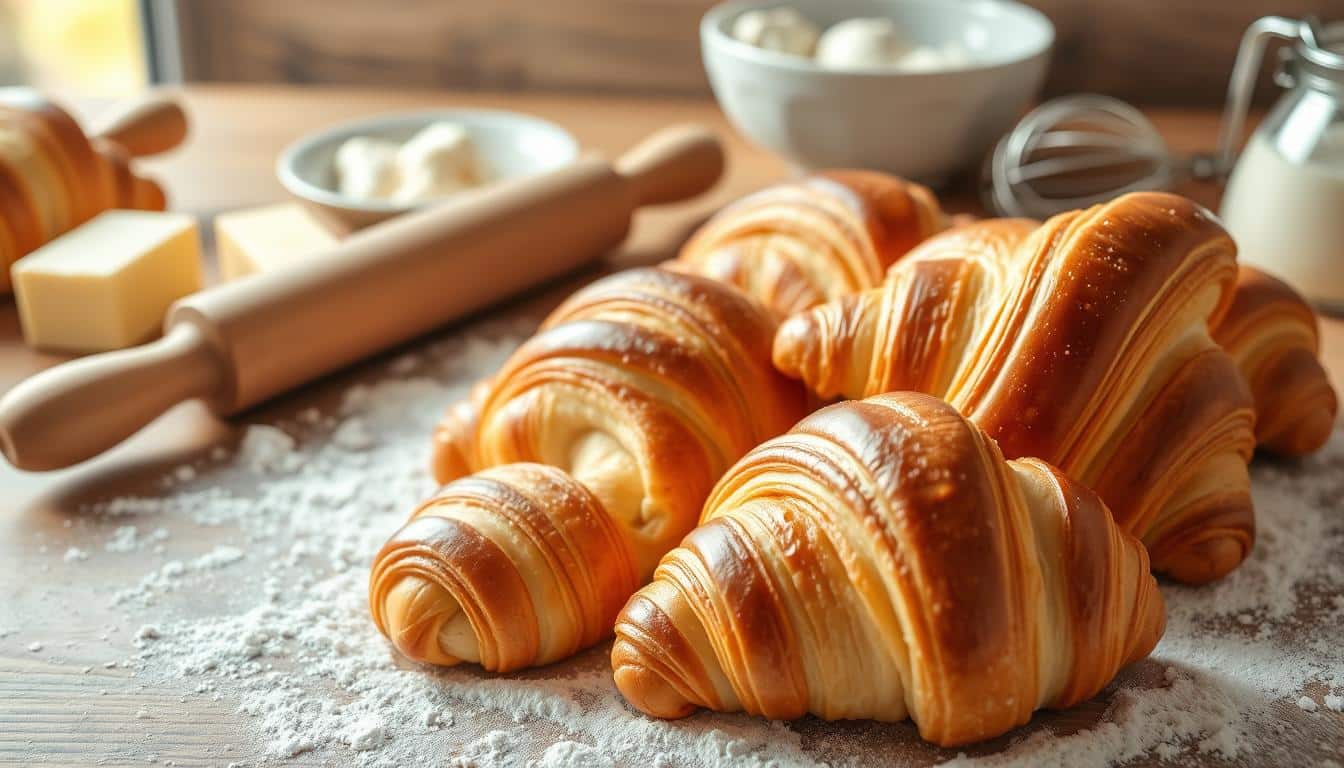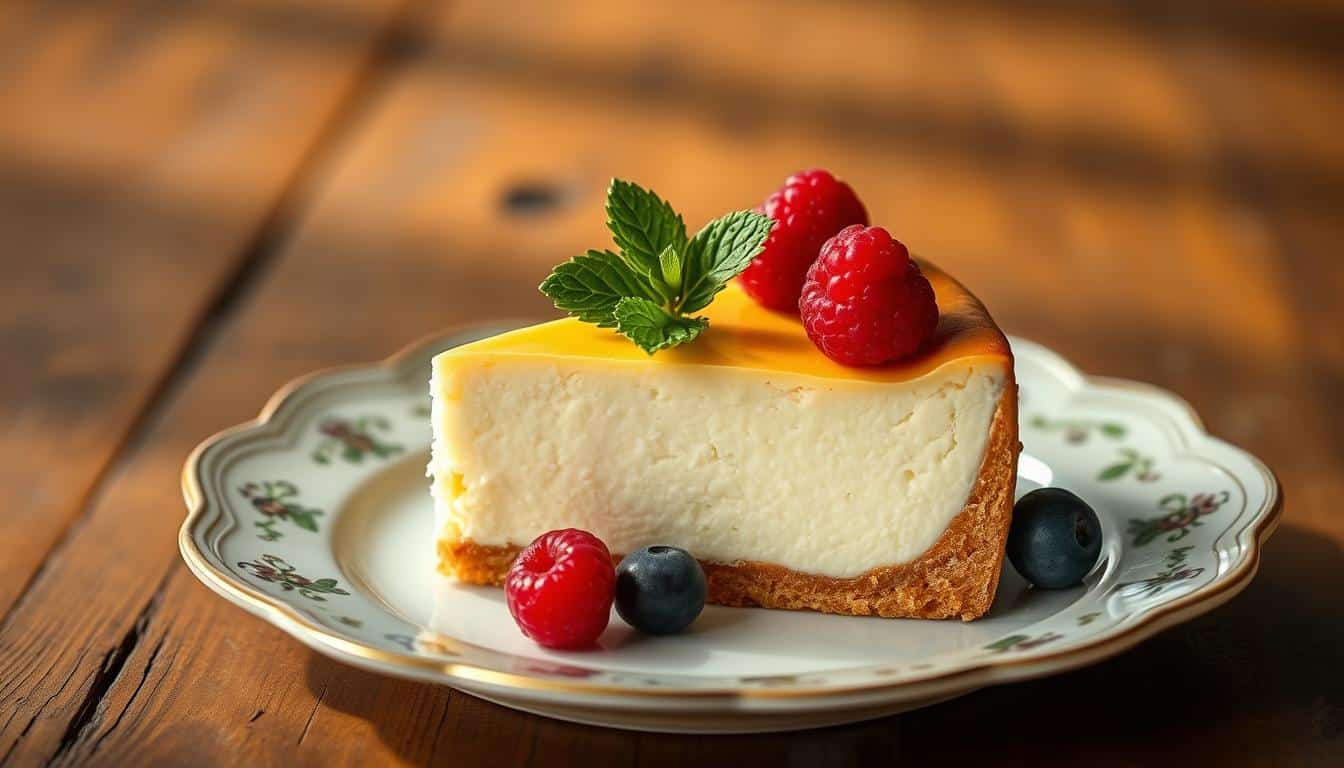Desserts are the grand finale of any meal, the sweet punctuation mark that leaves a lasting impression. Whether you’re a home cook exploring new recipes or an aspiring pastry chef, understanding the fundamentals of making and Dessert Preparation is essential. Therefore, this guide will walk you through the essentials, from mastering the basics and selecting ingredients to crafting professional-grade confections and perfecting the art of presentation. So, let’s dive into the delightful world of desserts!
Table of Contents
Understanding the Basics of Baking sweets
Desserts are more than just sweets; they’re an art form. Crafted with precision and creativity, they cater to the senses of taste, smell, and sight. Hence, it is important to explore the foundation of this delectable world.
What Are Baking sweets?
Desserts are a culinary category dedicated to sweet treats typically enjoyed at the end of a meal. They range from simple delights like cookies and ice cream to elaborate creations such as multi-layered cakes and chocolate sculptures. Not only do these confections satisfy a sweet tooth, but they also provide a sensory experience that complements the main course.
Key Ingredients for Baking sweets
The magic of desserts lies in the balance of flavors and the careful selection of ingredients. For instance, at the heart of most recipes are these staples:
- Sugar: From white granulated sugar to natural sweeteners like honey, sugar is the star ingredient that defines the sweetness of desserts.
- Dairy Products: Cream, milk, and butter add richness, while yogurt or cream cheese lends tanginess to certain recipes.
- Fruits: Fresh, dried, or pureed fruits introduce natural sweetness and a burst of flavor.
- Flours and Starches: These provide structure, whether you’re baking cakes or thickening puddings.
Meanwhile, consider how dessert cups incorporate fruits and creams in beautifully layered individual servings for inspiration.
The Importance of Flavor Balance
Creating a memorable dessert hinges on achieving a harmonious blend of flavors. In fact, the interplay of sweetness, acidity, and complementary tastes elevates desserts from ordinary to extraordinary. For example, imagine a tangy lemon tart—its sharpness balances the sweetness of the filling, making every bite refreshing and indulgent.
Essential Ingredients for Baking sweets
Crafting exceptional desserts starts with understanding the key ingredients that form their foundation. Indeed, from sweeteners to flavor enhancers, every component plays a specific role. As a result, choosing the right ones makes all the difference between an average dish and a show-stopping masterpiece.
Sugars and Sweeteners: Types and Uses
Sugar isn’t just sweet; it’s a game-changer in texture and color. For example:
- White Sugar: The most common choice for cakes, cookies, and frostings due to its clean flavor.
- Brown Sugar: Adds depth and moisture, perfect for chewy treats like brownies.
- Honey and Maple Syrup: Natural sweeteners that bring unique flavors to no-bake desserts or glaze finishes.
Looking to explore something different? Then, try a custardy French dessert for a rich, creamy experience.
Flour and Grains: Choosing the Right Base
Flour provides the structure in most desserts, and the type you choose determines the texture. For example:
- All-Purpose Flour: A versatile option for cookies, cakes, and muffins.
- Cake Flour: Lighter and finer, ideal for creating airy cakes and delicate pastries.
- Almond or Oat Flour: Great for gluten-free desserts, these add a nutty flavor.
Moreover, for a unique take on cakes, explore cherry chip cake or the whimsical cloud cake to bring variety to your repertoire.
Basic Techniques for Dessert Preparation
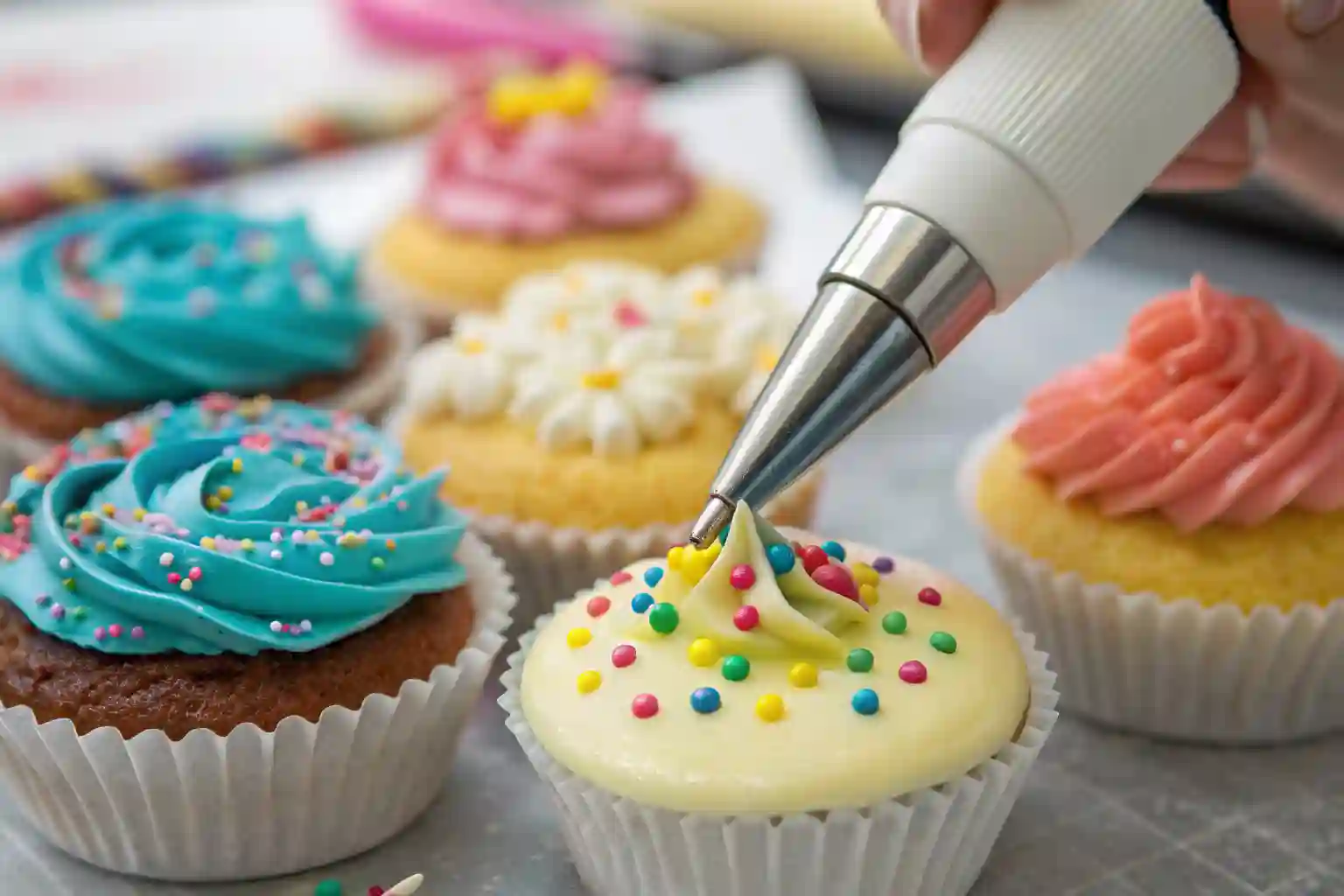
Mastering Crafting delicious desserts techniques is just as crucial as choosing the right ingredients. Even the simplest recipes demand precision and attention to detail. Therefore, by focusing on the basics, you can elevate your desserts from ordinary to extraordinary. Here’s how to nail the fundamentals.
Mixing Methods: Whisking, Folding, and Stirring
Getting the right consistency is a skill that can make or break your dessert:
- Whisking: This method adds air and volume, making it ideal for light and airy textures like meringues or whipped cream.
- Folding: A gentle technique that incorporates ingredients without deflating the mixture. For this reason, it’s essential for creating mousses and soufflés.
- Stirring: Ensures even distribution of ingredients, commonly used in cookie doughs or thick batters.
By mastering these techniques, you’ll be able to perfect recipes like cookie cakes, achieving delightful textures every time.
Baking Fundamentals: Temperature and Time Control
The oven can be your best friend—or your worst enemy. To ensure success, keep these tips in mind:
- Preheat your oven properly: This step is critical for even baking and consistent results.
- Use an oven thermometer: Accuracy is essential, as small temperature variations can affect the outcome.
- Stick to suggested baking times: However, check frequently near the end to avoid overbaking.
Adopting these habits guarantees your desserts will come out perfectly baked, enhancing both flavor and texture.
No-Bake Flavor Balance : Techniques and Tips
Short on time? No-bake desserts are a lifesaver and, thankfully, just as delicious.
- Layered trifles and tiramisu: These rely on assembling pre-prepared elements for ease and speed.
- Chilling is key: Always allow enough time for your desserts to set, ensuring the best texture and presentation.
- Experiment with gelatin or agar-agar: These stabilizers can add structure and elegance to your creations.
For inspiration, try a simple yet stunning layered trifle to impress your guests without much effort.
Creams and Puddings: Achieving the Perfect Consistency
From silky custards to luscious puddings, creamy desserts require finesse. For this reason, follow these tips:
- Stir constantly: This prevents lumps or curdling, ensuring a smooth result.
- Cook over low heat: Doing so avoids scorching and maintains the delicate balance of flavors.
- Strain the mixture: Use a fine strainer to achieve a flawlessly smooth finish.
Once you’ve mastered these techniques, store-bought options will no longer compare to your homemade versions.
Presenting and Decorating Desserts
The presentation of a dessert is as important as its flavor. In fact, a beautifully plated treat not only entices the eyes but also enhances the entire dining experience. Let’s explore the secrets of making your desserts look stunning.
The Importance of Attractive Dessert Presentation
We eat with our eyes first! A thoughtfully presented dessert creates excitement even before the first bite. Whether it’s a rustic tart or a polished mousse, adding visual appeal elevates the perceived taste and texture of your creation.
For instance, elegant French-inspired desserts like French cheesecake or Woolworth cheesecake are perfect examples of how presentation can take a dish to the next level.
Decorating Techniques: Fruits, Sauces, and Edible Flowers
Simple decorations can transform a dessert into an art piece:
- Fresh Fruits: Add vibrancy with sliced berries, citrus twists, or tropical options like mango.
- Drizzled Sauces: A drizzle of chocolate, caramel, or berry coulis instantly elevates elegance.
- Edible Flowers: Use pansies, violets, or lavender for a romantic, whimsical touch.
By pairing colors and textures creatively, you can ensure a memorable finish that wows your guests every time.
Popular Flavor Categories and Preparation Methods
Desserts come in many forms, each offering a unique taste and texture. Whether you enjoy indulgent cakes or refreshing frozen treats, there is something for everyone. In this section, we will explore popular dessert types and share tips for perfecting them.
Cakes and Pastries: From Sponge to Puff
Cakes and pastries are timeless favorites. For example:
- Sponge Cakes: These are light and fluffy, making them perfect for layering with creams and fruits.
- Pastry Doughs: Options like puff pastry and shortcrust work well for tarts or éclairs.
To achieve the best texture, it is important to focus on proper mixing, folding, and baking techniques.
Cookies and Biscuits: Achieving the Perfect Texture
Cookies should strike a balance between being crisp and chewy. For instance:
- Chewy Cookies: Using brown sugar and butter helps create a softer texture.
- Crisp Biscuits: Adding more flour and baking slightly longer results in a firmer bite.
Understanding how your oven works is crucial for getting consistent results.
Pies and Tarts: Golden Crusts and Delicious Fillings
A good pie or tart begins with a flaky crust. To achieve this, keep the butter cold and avoid overmixing the dough. Fillings can include creamy custards or seasonal fruits, making these desserts versatile for any occasion.
For something different, you can pair savory and sweet by trying recipes like cheddar bay biscuit chicken pot pie or chicken pot pie with cheddar bay biscuits.
Frozen Desserts: Ice Cream, Sorbet, and Gelato
Frozen treats are not only refreshing but also easy to customize. Here are a few examples:
- Ice Cream: Creamy and rich, this is always a classic choice.
- Sorbet: Light, dairy-free, and bursting with fruit flavor.
- Gelato: Denser and silkier than ice cream, ideal for bold flavors.
For an elegant touch, try adding raspberry jelly or experimenting with a White Chocolate Bread Pudding.
Confectionery Treats: Chocolates and Truffles
Making chocolates at home can be a rewarding process. For example, tempering chocolate gives it a glossy finish, while ganache or caramel fillings add richness. Additionally, rolling truffles in cocoa or nuts makes them look and taste luxurious, making them perfect as gifts.
Tips for Successful Dessert Preparation
Preparing the perfect dessert can be challenging, but it doesn’t have to be stressful. By keeping a few key tips in mind, you can overcome common issues and achieve consistent results every time.
Common Mistakes and How to Avoid Them
Mistakes happen, but they are often easy to fix. For example:
- Overmixing Batter: This can make cakes dense. To avoid this, mix only until the ingredients are combined.
- Incorrect Measurements: Baking is precise, so always measure your ingredients carefully.
- Rushing Cooling Times: Allow desserts to cool completely before decorating to maintain their structure and flavor.
By being mindful of these tips, you’ll save time and ensure your treats turn out beautifully.
Adapting Recipes for Dietary Restrictions
Cooking for a diverse group often requires accommodating dietary needs. Here’s how you can adjust recipes:
- Gluten-Free: Swap all-purpose flour with almond or rice flour.
- Vegan Options: Replace eggs with flaxseed meal or applesauce, and use plant-based milk and butter.
- Low-Sugar: Use natural sweeteners like stevia or maple syrup instead of sugar.
With these substitutions, even traditional recipes like xango dessert can be made to suit everyone.
Scaling Recipes for Any Occasion
Whether you’re baking for a large party or just for two, scaling recipes can be tricky. To double or halve a recipe, adjust all ingredient quantities proportionally. However, remember that cooking times may vary, so keep a close eye on your desserts to ensure they are cooked properly.
Frequently Asked Questions About Preparing and Presenting Desserts
Questions often pop up when preparing desserts, especially for beginners. Here are answers to some of the most common queries to help you troubleshoot and refine your skills.
How Can I Avoid Cakes Sinking in the Middle?
A sunken cake is a common issue, often caused by underbaking or overmixing. To prevent it:
- Check for doneness using a toothpick before removing the cake from the oven.
- Avoid opening the oven door too early, as this can cause the cake to collapse.
If you’re new to baking, starting with simple recipes like cloud cake can help you master techniques before moving to complex ones.
What Are Quick Dessert Recipes for Beginners?
For those short on time, no-bake desserts are a great choice. Options like chocolate mousse, fruit parfaits, or cookie bars require minimal effort but deliver maximum flavor.
Quick and elegant recipes like dessert cups or xango dessert are also excellent for impressing guests without too much effort.
How Do I Get a Glossy Finish on Ganache?
Achieving a shiny ganache requires proper technique. Heat cream until just simmering, then pour it over chopped chocolate. Stir gently without whisking to avoid bubbles, resulting in a smooth, glossy surface.
What Are the Best Substitutes for Common Dessert Ingredients?
Running out of ingredients doesn’t mean scrapping your plans:
- Replace butter with coconut oil or margarine.
- Use yogurt or mashed bananas instead of eggs in baked goods.
- Swap heavy cream with evaporated milk or coconut cream.
These substitutes work beautifully in recipes like White Chocolate Bread Pudding or other gelatin-based desserts.
How Can I Make My Desserts Look More Professional?
The secret lies in attention to detail. Use piping bags for precise frosting, garnish with fresh fruits or herbs, and always serve on clean, stylish plates. Even simple tricks can make your desserts look bakery-worthy.
Tips for Beginners in Dessert Making
Starting your journey into the world of desserts can feel overwhelming, but it doesn’t have to be. By focusing on simple recipes and mastering basic techniques, you’ll build confidence and skills in no time.
Common Mistakes and How to Avoid Them
When learning to make desserts, mistakes are inevitable, but they’re also great learning opportunities. Here are a few tips to help you avoid common pitfalls:
- Skipping Instructions: Always read the recipe fully before starting to ensure you have all the ingredients and tools ready.
- Overcrowding the Oven: Bake one tray at a time to ensure even cooking.
- Using Cold Ingredients: For most recipes, room-temperature ingredients mix more evenly, creating better textures.
Learning from these missteps will improve your skills and yield better results. Try beginner-friendly recipes like raspberry jelly or French cheesecake for a great starting point.
From Simple to Complex Dessert Preparation
Start small! Begin with straightforward recipes like cookies or brownies, which are forgiving and don’t require advanced techniques. Once you’re comfortable, move on to layered cakes, mousses, or even tarts. Each new challenge builds on the basics, helping you grow as a baker.
Experimenting with layered dessert cups or even savory pies like cheddar bay biscuit chicken pot pie is a great way to explore diverse skills.

